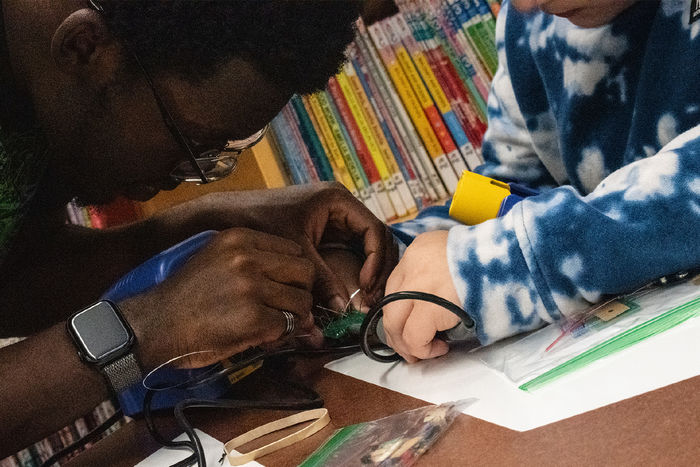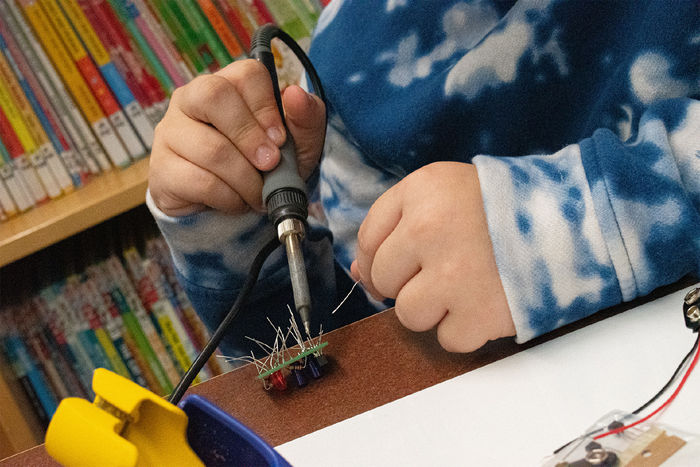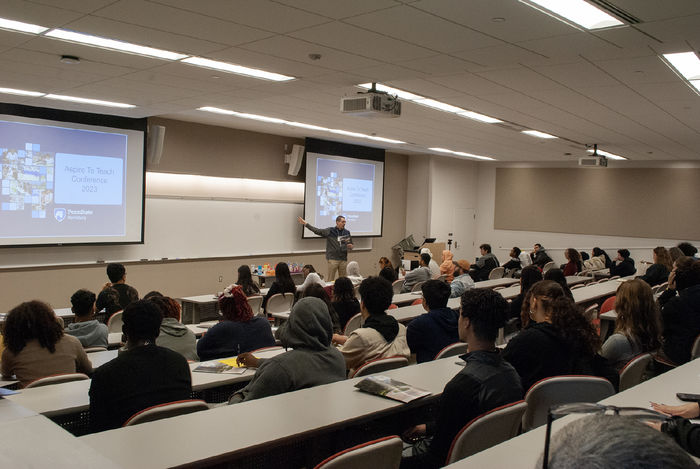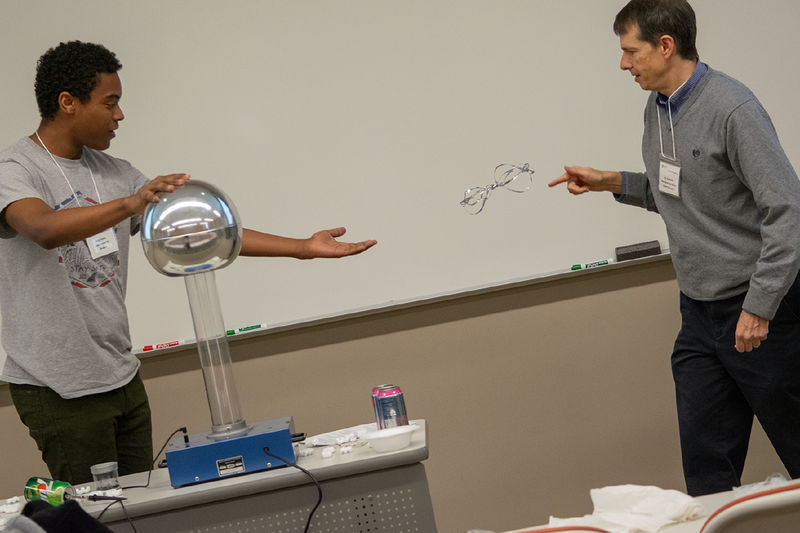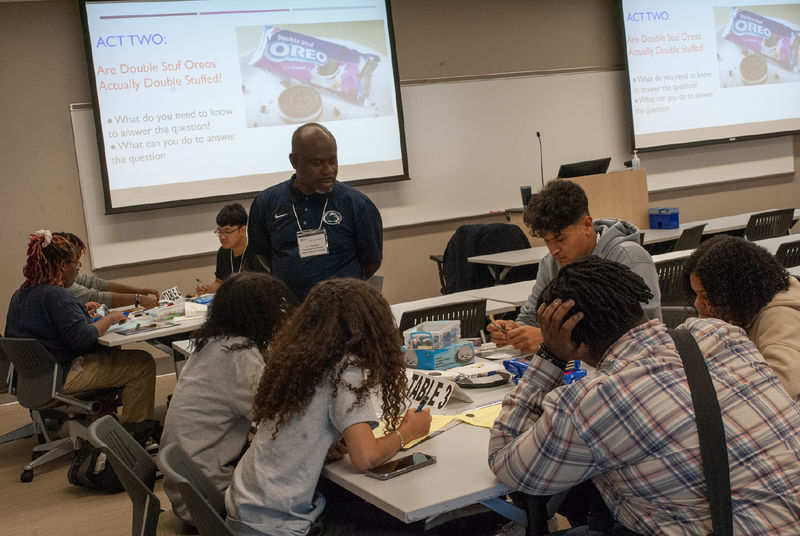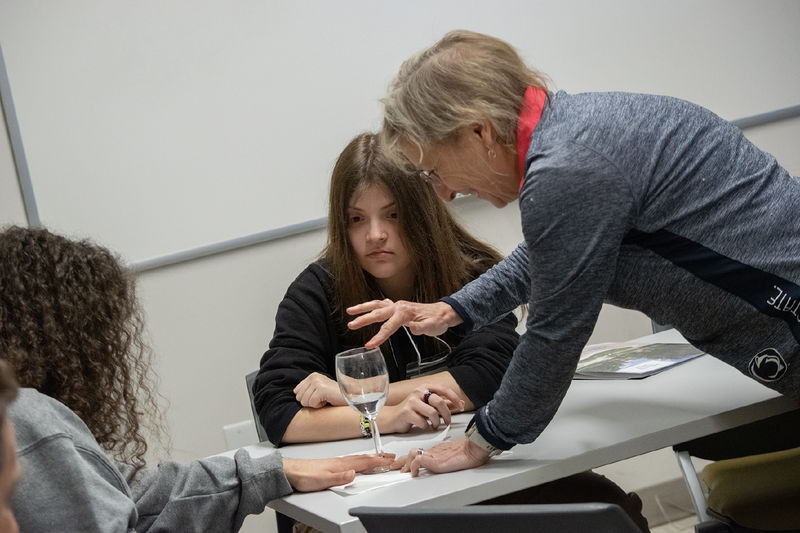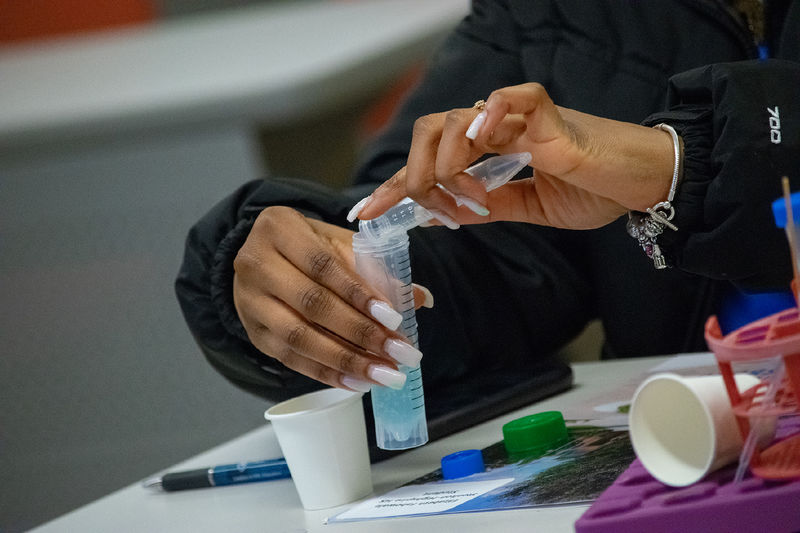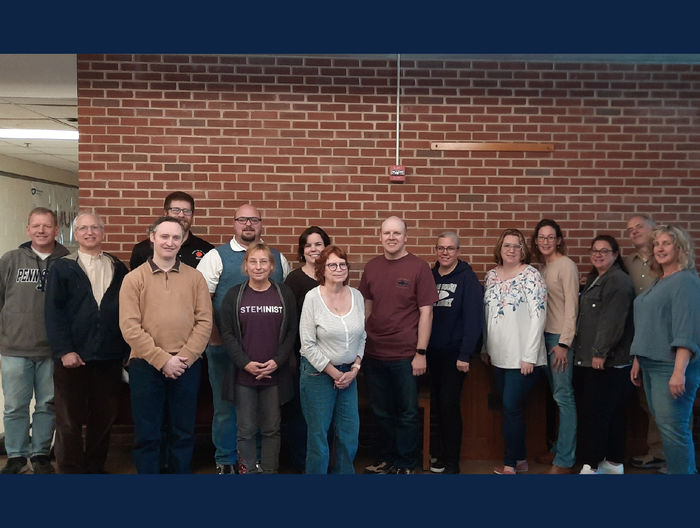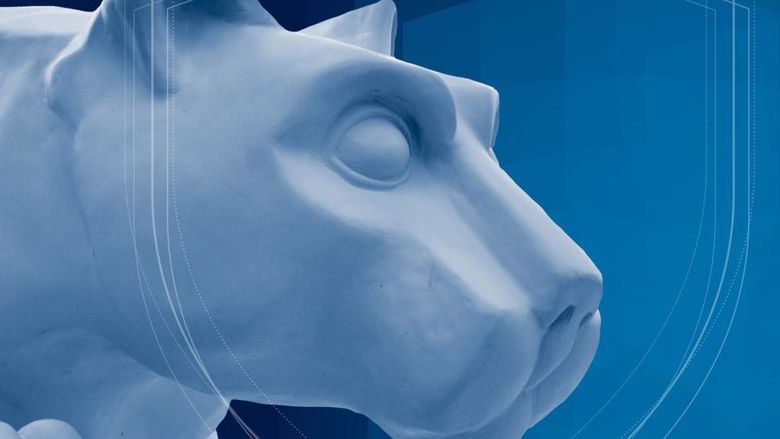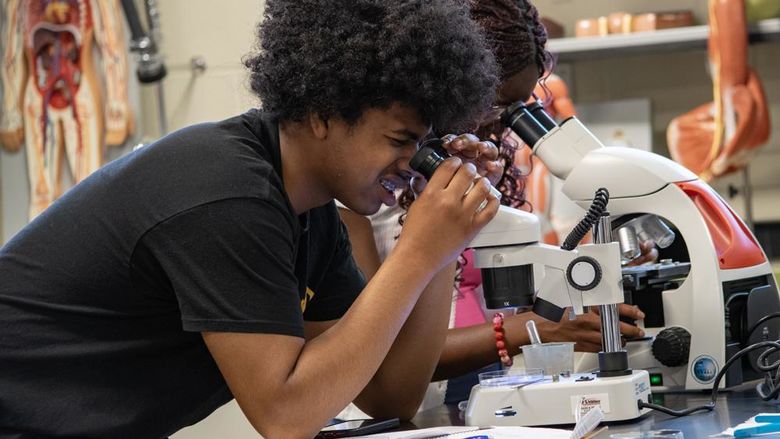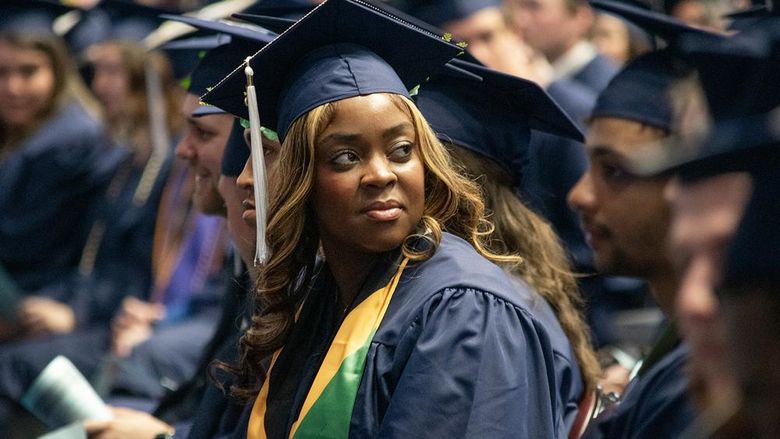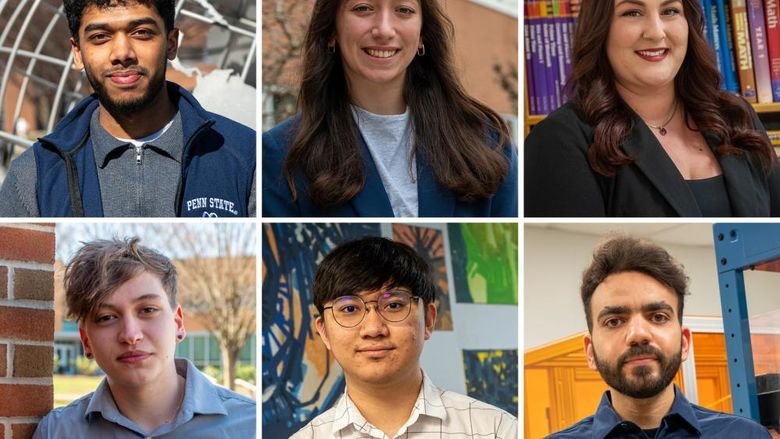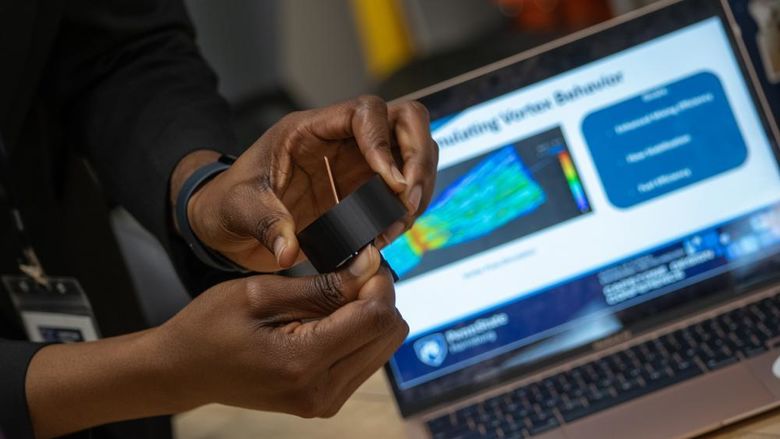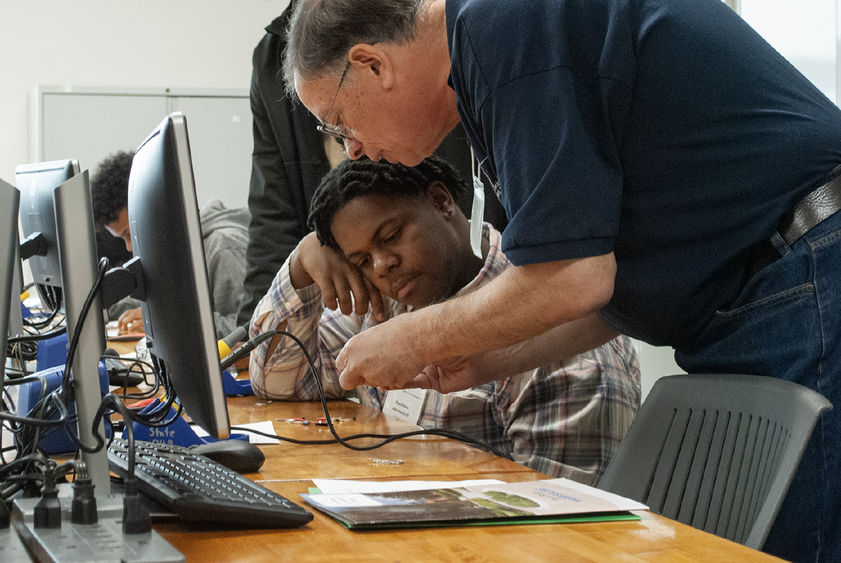
In the fall of 2023, more than 100 high school students descended on the Penn State Harrisburg campus for the Aspire 2 TEACH conference. The conference, funded by the Aspire 2 Education grant from the Pennsylvania Department of Education, aimed to ignite students’ interest in STEM-CS (computer science) fields and encourage students to consider teaching in a STEM-CS discipline as a career path – while providing a great experience at the college.
MIDDLETOWN, Pa. — At Middletown Public Library last fall, Penn State Harrisburg student Jeremiah Ddumba showed a seventh-grade student how use a soldering iron to melt metal wires on a circuit board, in order to allow an electrical current to flow through and light a tiny bulb.
He demonstrated how to use the soldering iron and warned that the iron gets very hot, and then gave the student a chance to try for himself.
Ddumba, president of Penn State Harrisburg’s chapter of IEEE (Institute of Electronic and Electrical Engineers), helps run a weekly Teen STEM program at the library. He and other college students introduce middle and high school students to STEM fields through hands-on activities. They focus on helping the students create items they can take home.
The group’s outreach started in 2022-23, when the IEEE club was looking for volunteer opportunities for members and the library’s director reached out. It took a few months for the Teen STEM program to get rolling, but now it can attract anywhere from a handful to more than a dozen participants, and a program for elementary aged kids has been added. Some students are already STEM-inclined, while others are just there to learn.
“When I was a kid in middle school or high school, there wasn’t anything like this,” Ddumba said.
He asks the IEEE board and members for ideas for activities and then they determine what they can do or if they’ll need funding or other resources. Soldering was a popular activity the first year.
Nicholas Brown, vice president of the IEEE, said the kids who participate sometimes have little knowledge of the subject at hand, but get excited about what they can learn.
“I feel like I get to inspire a younger group of STEM majors to really expand on some of the ideas they have,” Brown said. “A lot of the students are really curious. It’s really inspiring to see the ideas they come up with.”
The IEEE organization’s program is just one example of the many ways Penn State Harrisburg faculty, staff and students are reaching out to encourage and inspire the next generation of STEM students — directly and through their teachers.
STEM outreach efforts from the campus have included:
- A two-week STEM Summer Enrichment Program for high school students, held for the fifth time in 2023.
- A two-week Online Math Summer Bridge Program, held in 2023.
- The Expanding Youth Involvement in Exploring Exciting Employment Directions in Agriculture (YIELD) program for teachers, a partnership between Penn State’s Center for Science and the Schools and Penn State Harrisburg’s School of Science, Engineering, and Technology.
- An annual workshop for physics teachers to help them adapt to changing science standards.
- EnvironMentors, a program that links high school students with undergraduate student mentors and faculty mentors.
- Aspire2Teach, a conference that connected high school students and their teachers with STEM resources.
Inspiring teachers and future teachers
In the fall of 2023, more than 100 high school students descended on the Penn State Harrisburg campus for the Aspire 2 TEACH conference. They used math to figure out whether Double Stuf Oreos are truly double stuffed, constructed DNA necklaces and built blinker circuits, among other activities. They and their teachers heard from a keynote speaker who is an expert in STEM education.
The conference, funded by the Aspire 2 Education grant from the Pennsylvania Department of Education, aimed to ignite students’ interest in STEM-CS (computer science) fields and encourage students to consider teaching in a STEM-CS discipline as a career path — while providing a great experience at the college.
“We wanted students to leave believing that STEM-CS can be for them and that they can make their mark on the world through these fields, including by teaching,” Michael Swogger, associate teaching professor of education and chair of the conference, said. “We hoped the teachers would gain inspiration and confidence to hone their craft in a way that honors and privileges their students' backgrounds and identities while making their subject matter relevant to their students' lives.”
In September 2023, the Capital Area Institute for Mathematics and Science (CAIMS) hosted a workshop on how to teach financial literacy through math modeling, funded by the Link Foundation. About 30 teachers, who teach students in grades 3-5, participated. Because of the number of students each of those teachers reach, the program is expected to impact more than 9,000 students each year.
The goals of all these STEM outreach events include increasing diversity in STEM at the college, developing programs and initiatives that will encourage younger generations to continue their studies in STEM subjects and consider careers in these areas, and boosting enrollment and retention in STEM fields, said Reuben Asempapa, associate professor of mathematics education and organizer of the financial literacy workshop. But it’s also about helping students gain problem-solving and critical thinking skills they’ll use for life. They are skills that all individuals need in decision-making, in the workforce, in their communities, and in daily life, he said.
“For me, one of my main philosophies as a STEM educator, is about problem solving and modeling,” Asempapa said. “Life is all about problem solving. When these students come to us, the kinds of activities we engage them with and the approach we use when learning mathematics that includes a focus on problem-solving is exciting, rewarding, meaningful and essential. We do these things, so students have a unique approach to understanding and critiquing our world and develop themselves to become lifelong problem solvers.”
Penn State Harrisburg faculty members are also helping K-12 teachers adapt to new science standards.
Art Pallone, assistant teaching professor of physics, has worked to organize annual workshops for high school teachers through his role as vice president of the Central Pennsylvania chapter of the American Association of Physics Teachers (AAPT). He has worked with Alice Flarend, a science teacher and Physics Teaching Resource Agent through the AAPT, to host the events on the Penn State Harrisburg campus three times — virtually in 2020, and in person in 2022 and 2023.
At the workshops, Pallone and Flarend, with the help of other faculty members from the college, help teachers learn how to adapt lessons they already teach to more closely align with the new standards — which Flarend said put an emphasis on students investigating to find a solution to a problem, rather than just taking in content.
Pallone said the workshops are a fantastic opportunity for the Penn State Harrisburg faculty to work together with fellow educators “to prepare for an increasingly complex world, through educator training in both content and best practices.”
The workshops also help keep lines of communication open between the different levels of science education.
“On our end, these are the students we’re going to be getting in classes,” Pallone said. “It’s good for us to maintain ties and know what’s going on with regard to the instruction at the secondary level and also be able to provide feedback.”
